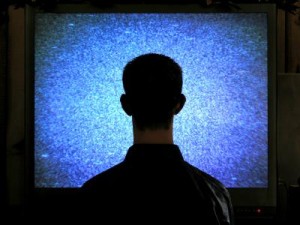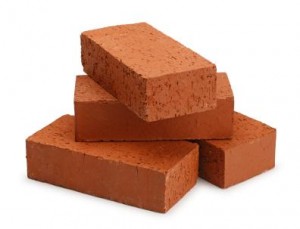As a tai chi teacher and movement coach, I get to meet a lot of people who want to relax, slow down and have more energy for the things they love to do in life. But there's a very common misconception that I encounter and I think it leads people to spend too much time chasing the wrong things when it comes to a relaxation practice. Hopefully, this series will begin to clarify what the best way to start a relaxation practice is and how to most efficiently get the results you want.
First, the big mistake: people think that lots of hand-waving choreography, preferably done in a pristine setting, often to calming music, is the best way to become more relaxed. They're wrong. It's the best way to have a temporary escape from 24/7 habits that are creating more stress in the first place.
The good news is that you can change these underlying habits. Even though they are pre-conscious, you can learn to recognize them, test them, and alter them. And I can show you how that all works. This series will save you a lot of time and money to seeking me out in person, or wasting time on the wrong things with another qualified instructor. You can make major progress on your own, if you focus on three areas that I'll tell you about below.
I am putting together home-study courses for each of these areas, because they are subjects where you can make progress on your own, without the close guidance of an instructor, once you have the right information and a good practice system.
You can boost your energy, save a lot of discomfort, and begin the process of moving through life more gracefully, if you focus on:
How You See

How you see the world may be a little distorted. The eyes, or more accurately, vision governs how you interpret the physical space around you and how you respond to it (i.e. your posture and balance) way more than most people realize.
When we think of "seeing" something, we see it or we don't. Vision is a much more comprehensive, integrative act. In other words, seeing is what your eyes do mechanically, but vision is how your brain interprets the world coming at you. And your body reacts to that interpretation constantly.
All of these reactions and relationships are rooted in evolutionary survival mechanics, buried deep in your pre-conscious mind. But don't worry, there are some really clear ways to test how your body and eyes are working together and demonstrate clearly when the picture is fuzzy, even if you don't realize it right now.
The biggest benefit of improving your visual skills is that, when your brain gets more information, it can react more efficiently. A small eye movement will replace a big body movement and simply put, to get from A to B will take less energy, so you'll have more energy to spend on something else or you'll get there faster.
In the 6-week course, you'll learn how to systematically test and observe what your body is doing subconsciously and improve how your brain interprets visual information. As your visual skills improve, your body will literally recalibrate how it moves through space.
How You Breathe

The next area that I wish every single person would work on before they come see me is their breathing. Poor breathing dramatically reduces your energy level, encourages you to stay stressed out, and even impacts your mood.
Don't believe me? Try walking around for the rest of your day today breathing only out of a straw. See how much energy you have for even the simplest things.
On a cultural level, our largely sedentary lifestyle has a direct impact on our breathing mechanism. See, good breathing is all about fully activating the diaphragm, creating a vacuum effect that fills the lungs and simultaneously pressurizes the abdomen, massaging the internal organs. In slumped seated posture, you limit the movement of the diaphragm. And no, “good posture†with shoulders back and chest up doesn't fix the breathing problem. In fact, the way most people hold “good posture†makes the breathing problem worse --- they are trying to fill the lungs by expanding the chest to create more volume. Not only is this less effective than diaphragmatic breathing, but it actually mimics hyperventilation and triggers a stress response.
The best way to break the stress cycle and give yourself an internal tune up, is to learn the proper way to breath with the diaphragm and develop a consistent practice. Information alone doesn't do you any good...you have to be smart about making new habits. In the course, I will teach you how to do both.
How You Walk
 When you teach movement 3-4 hours a day, you get to see a lot of different people's ingrained movement patterns and there are some striking common themes. Most people who want to learn tai chi, for example, begin by moving in exactly the opposite way prescribed by the Tai Chi Classics. In the Classics it says “the movements should start in the feet, be powered by the legs, steered by the waist and expressed in the hands.†Instead, everything is about leading from the upper body, with little to no connection to the legs.
When you teach movement 3-4 hours a day, you get to see a lot of different people's ingrained movement patterns and there are some striking common themes. Most people who want to learn tai chi, for example, begin by moving in exactly the opposite way prescribed by the Tai Chi Classics. In the Classics it says “the movements should start in the feet, be powered by the legs, steered by the waist and expressed in the hands.†Instead, everything is about leading from the upper body, with little to no connection to the legs.
Of course it's no coincidence that there is an abundance of back pain, knee injuries and general inability move around freely in our culture, right? Right......
I say it all starts in the feet. Try walking around with heavy bricks as feet and see how that feels. Maybe you feel a pinch in your hip right away, or a tug on the back. Maybe you're lucky enough to feel a crick all the way up in your neck. Lucky indeed!
In the “feet†course, I will teach you how to open your feet again, even if you think your feet are too flat to work right or your hips are too stiff. “But I have these little plastic things that I put in my shoes....†Ok, if I told you to wear a full-body cast for the rest of your life because your aches and pains mean all those parts weren't supposed to be moving around, would you take me up on that offer? I'm not knocking some foot support, but if you've read this far, I think you know that I'm focused on helping you change movement habits to have more energy and less pain. Immobile feet are part of a movement habit....and re-mobilizing the tiny little bones in your feet is an important new project for you.
You'll learn how to re-awaken the feet with self-massage and mobility exercises that will have you moving lighter, faster, and with a better bounce in your step. Just like the other courses in this series, everything is laid out in a 6-week format that blends learning new concepts gradually with systematic follow-up practice.
One of my teachers, Dr. Eric Cobb always says, “the body you have is the one you've earned through how you move.†In these courses, I will teach you how to move differently in order to feel differently. Most people will never realize the degree to which their pre-conscious patterns are impacting how they go through their day, but you'll be tuned in to a whole different set of signs that will help you: cultivate more energy, move with more ease, and have less pain.

Share this post
Twitter
Google+
Facebook
Reddit
LinkedIn
StumbleUpon
Pinterest
Email